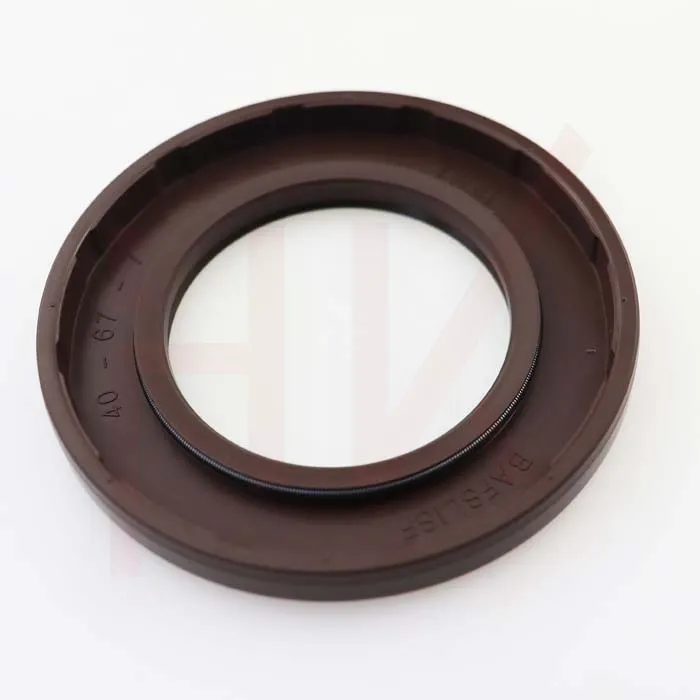Dec . 28, 2024 03:21 Back to list
oil seal for rotating shaft
Understanding Oil Seals for Rotating Shafts
Oil seals, also known as shaft seals, play a crucial role in various mechanical systems by preventing the leakage of lubricants while also keeping contaminants out. They are particularly important in applications involving rotating shafts, such as in automotive engines, industrial machinery, and various types of pumps. This article will explore the function, construction, types, and installation considerations of oil seals for rotating shafts.
Function of Oil Seals
The primary purpose of an oil seal is to retain oil within a system while preventing dirt and moisture from entering. By sealing the gaps between rotating and non-rotating components, these seals help maintain the proper lubrication of moving parts. In doing so, they contribute significantly to the longevity and efficiency of machinery. If an oil seal fails, it can lead to lubricant leakage, leading to inadequate lubrication, overheating, and potentially catastrophic failures.
Construction of Oil Seals
Oil seals are typically made of elastomeric materials, such as nitrile rubber, silicone, or fluorocarbon compounds, which provide good resistance to oil and high temperatures. The design of an oil seal usually consists of a circular shape with a flexible lip that contacts the shaft. The lip is designed to create a dynamic seal that adapts to the movement of the shaft, ensuring that it remains in contact despite variations in speed or temperature.
Additionally, oil seals may include metal components to provide structural integrity and stability. The metal casing generally serves to hold the elastomeric seal in place and provides rigidity. Some oil seals also have reinforcing materials or additional features to improve their resistance to pressure and mechanical wear.
Types of Oil Seals
There are several types of oil seals designed for various applications
. The most common types includeoil seal for rotating shaft

1. Single Lip Seals These seals feature a single sealing lip and are primarily used in low-pressure applications, such as automotive crankshafts. They are effective in retaining oil but may not be suitable for high-pressure environments.
2. Double Lip Seals As the name suggests, these seals have two sealing lips. They provide extra protection against seepage and are commonly used in more demanding scenarios where contaminants are more likely to enter the system.
3. Spring-loaded Seals These seals incorporate a spring mechanism that helps maintain the lip's contact with the shaft, thus enhancing sealing performance. They are useful in applications subject to shaft movement or vibration.
4. Segmented Seals These seals are made up of several segments, allowing them to adapt to applications with varying diameters or irregular surfaces.
Installation Considerations
Proper installation of oil seals is critical to their performance and longevity. It is essential to ensure that the sealing surface and the seal itself are clean and free from debris. The correct alignment of the seal is also crucial; misalignment can lead to premature wear and eventual failure. It is advisable to use installation tools specifically designed for oil seals to avoid damaging the seal during the process.
Moreover, it is important to choose the right seal for the specific application, taking into account the operating temperature, pressure, and the type of fluid being sealed. Using seals that are not designed for the specific conditions can result in rapid deterioration and failure.
Conclusion
Oil seals for rotating shafts are vital components in a wide range of mechanical systems. They serve the critical function of retaining lubricants while preventing contaminants from causing harm to the system. Understanding their construction, types, and proper installation techniques can significantly enhance machinery performance and extend operational lifespans. In an era where machinery efficiency is paramount, ensuring the integrity of oil seals should never be overlooked. Proper knowledge and maintenance can help prevent costly downtime and repairs, ultimately leading to more reliable operations.
-
The Trans-formative Journey of Wheel Hub Oil Seals
NewsJun.06,2025
-
Graphene-Enhanced Oil Seals: Revolutionizing High-Pressure Oil Sealing
NewsJun.06,2025
-
Future of Hydraulic Sealing: Advanced Intelligent TCN Oil Seals
NewsJun.06,2025
-
Don’t Let a Broken TCV Oil Seal Ruin Your Day
NewsJun.06,2025
-
Bio-Inspired Dust Seals for Better Sealing Performance
NewsJun.06,2025
-
Biodegradable and Sustainable Hydraulic Seal Materials
NewsJun.06,2025
-
Top Oil Seal Solutions for Your Industrial Needs
NewsMay.22,2025
Products categories
















